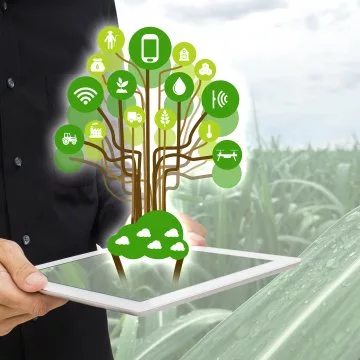The March 2022 Ag Economy Barometer maintained by the CME Group and Purdue University revealed a sizable portion of America’s largest farmers “are unable to take advantage of many applications and services” on the Internet because they don’t have an Internet connection or their connection is poor quality.
The gap in access exists at the same time the sector is embracing precision agriculture technology such as GPS guidance, writes Chuck Abbott, a journalist for the Food & Environment Reporting Network.
Twelve percent of farmers surveyed said they had no internet access, and 16% reported poor-quality connections. The survey is directed at the top tier of U.S. agriculture — farmers and ranchers with production worth at least $500,000 a year.
The infrastructure bill signed by President Joe Biden in fall 2021 included $65 billion to improve internet services for rural areas, low-income families and tribal communities. Most of the money would be distributed in grants to states. So far, the USDA has awarded $188 million through its ReConnect program and expects to issue at least $2 billion through the program this year.
“Just 3 out of 10 respondents said they had ‘high quality’ internet access, followed by 41% who chose ‘moderate quality,’ wrote Purdue economists James Mintert and Michael Langemeier, who oversee the barometer.
Half of the farmers in the biggest corn, soybean and wheat states and a quarter of farmers nationwide have embraced precision agriculture, according to a USDA report on farm computer usage in summer 2021.
“This would include the use of global positioning (GPS) guidance systems, GPS yield monitoring and soil mapping, variable rate input applications, use of drones for scouting fields or monitoring livestock, electronic tagging, precision feeding, robotic milking, etc.," the report says.
Some 82% of farms across the country had Internet access in 2021, up from 75% in 2019. Half of farms had a broadband connection, and 70% used a cellular data plan for access. Two-thirds of farms had a desktop or laptop computer, and 77% had a smartphone.
Rural adults are less likely than suburban adults to have broadband service at home and are less likely than urban adults to own a smartphone, tablet, laptop or desktop computer, said the Pew Research Center in August 2021. The digital divide between urban and rural Americans has narrowed since 2016, and 72% of rural residents have broadband at home, compared to 79% of suburban residents.
“Even though rural areas are more wired today than in the past, current infrastructure does not support consistently dependable broadband access in many rural areas,” said the Pew Research Center. “This lack of reliable high-speed internet access has come to the forefront of discussions about navigating remote work and school during the coronavirus pandemic.”



![[Technology Corner] Autonomy & Robotics Take Center Stage](https://www.precisionfarmingdealer.com/ext/resources/2026/01/12/Autonomy--Robotics-Take-Center-Stage.webp?height=290&t=1768253759&width=400)


